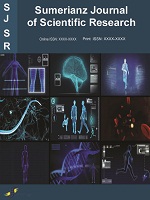Sumerianz Journal of Scientific Research

Online ISSN: 2617-6955
Print ISSN: 2617-765X
Quarterly Published (4 Issues Per Year)
Journal Website: https://www.sumerianz.com/?ic=journal-home&journal=29Archive
Volume 3 Issue 11 (2020)
Smart Interactive Learning Measures for the Modern Education System
Authors : Muhammad Shahzad Nazir
DOI : doi.org/10.47752/sjsr.311.147.150
Abstract:Educational needs are of paramount importance for educational institutions. We proposed a synergistic framework for combining the key elements of teaching and learning, with a flow theory approach that can induce the overall learning efficacy with an added value of sustaining the smart teaching and training environment. The given framework has various applications in the realms of technology, communication, and learning to help students adjust their learning needs and resolve any issues within the school system. There are positive outcomes to the proposed framework of minimal learning requirements, due to a more confident learning environment, that can allow for more advancement and academic success. Students cognitive ability and ability to learn can be improved via constant monitoring and analyzing of the student’s performance with software and technology (IoT). Figuring out how to build Internet of Things applications for the various student levels in one classroom is a challenging issue. Our aim is to assist user to appreciate the aptitude, adapt, and use technologies like artificial Intelligence to produce fruitful learning objectives.
Remote Sensing Techniques in the Investigation of Polluted Soils at Illegal Dumpsites in Yenagoa Metropolis, Bayelsa State, Nigeria
Authors : Jonathan Lisa Erebi ; Eteh Desmond Rowland ; Bisong Andy Etta
DOI : doi.org/10.47752/sjsr.311.141.146
Abstract:Remote Sensing Techniques in the evaluation of Polluted soils at illegal dumpsites in urban Soil environment and its effect on human being in Yenagoa metropolis, Bayelsa State compels us to investigate the presences of the following heavy metals, such as Fe, Mn, Cr, Cu, Zn, Ni, Cd, and Pb. The result reveals High-level of heavy metals accumulation at illegal dumpsites. Soil sample by leachate migration from the open dumpsite and all the illegal dumpsites found within the marketplace close to Epie Creek which serves as a significant source of household water and a tributary to River Nun. Our results also show that population increase in migration of human being from villages to the city in land use/land cover map built-up area contains 16.96 km2 with 4%, and bare land 20% in 1992 and 2020 land use/land cover built-up area contain 93.30 km2 with 23% and bare land is 35%. Therefore, the percentage from 1992 to 2020 in built-up area especially by 19% and bare land by 15% thereby water bodies and vegetation decreases. The area lacks environmental law for dumping disposals and the government needs to carry out landfill site suitability for solid waste disposal site using Remote sensing and GIS in other to reduce soil pollution by heavy metals in the area over time.
Development and Performance Evaluation of a Double Barrel Cassava Grating Machine
Authors : Okonkwo Ugochukwu Chuka ; Okafor Christian Emeka ; Ihueze Christopher Chukwutoo
DOI : doi.org/10.47752/sjsr.311.133.140
Abstract:In this study, a double barrel cassava grating machine with double discharge outlet has been developed and its performance evaluated and optimized. The machine was designed to ensure very high throughput, easy decoupling and coupling and reduction in grating time. The performance evaluation of the grating machine was carried out using Design Expert Software. A central composite rotatable design of response surface methodology (RSM) was adopted in determining the optimum operating condition of the machine. The optimum operating condition obtained from the machine shows an optimum abrasive surface hole size of 6mm, feed rate of 11.8kg/min and an optimum feed rate of 20.16 kg/min; a through put capacity of 730.8kg/hr. The average mass loss, partially grated and completely grated were found to be 1.43kg, 1.48kg and 22.09kg, respectively for 25kg sample; which indicates effective grating and waste was drastically reduced with an average grating efficiency of 86.23%.


